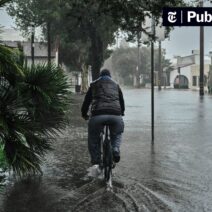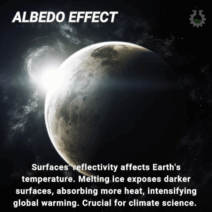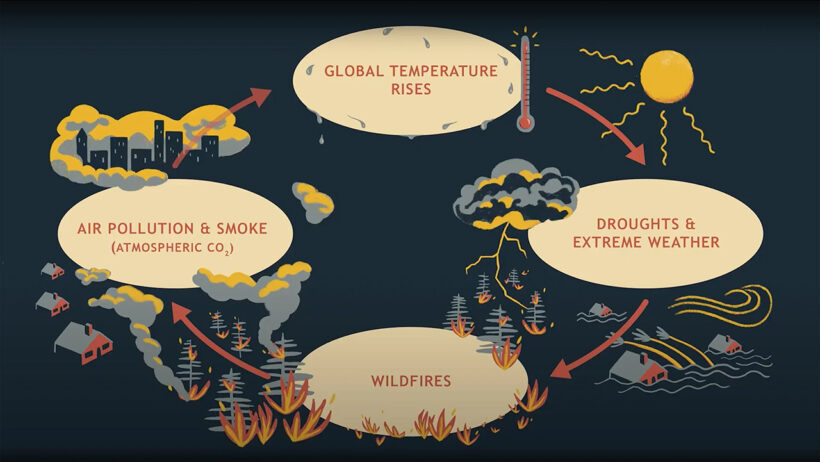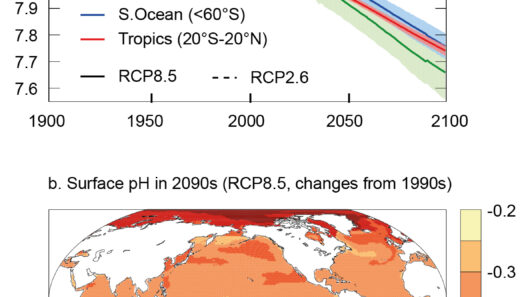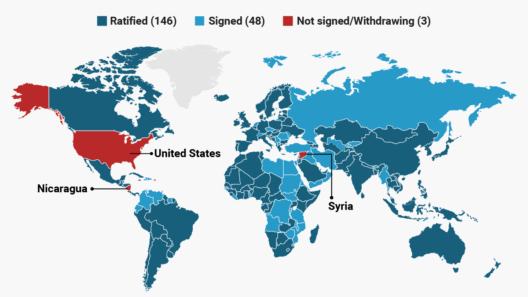Climate change is perhaps one of the most pressing challenges facing contemporary society, with far-reaching implications for ecosystems, economies, and human health. One of the most alarming manifestations of this global crisis is the escalation of wildfires. These infernos, once considered seasonal phenomena, are increasingly becoming year-round threats. But the relationship between climate change and wildfires is not merely linear; it signifies a perilous feedback loop that exacerbates both climate instability and wildfire frequency.
Understanding this feedback loop begins with a close examination of the climatic conditions conducive to wildfires. As average global temperatures rise, a multitude of factors converge to create an environment where wildfires can thrive. Drier conditions, attributed to increased heat and altered precipitation patterns, lead to parched landscapes. This desiccation not only renders vegetation more flammable but also contributes to the proliferation of invasive plant species that are well-adapted to fire-prone environments.
Once ignited, wildfires release a significant quantity of carbon dioxide into the atmosphere, further accentuating the greenhouse effect. Trees and vegetation, which act as carbon sinks, are incinerated, transforming them into sources of greenhouse gas emissions. This phenomenon raises intriguing questions: Can we effectively combat climate change while simultaneously grappling with an ever-increasing incidence of wildfires? The answer lies in tackling the feedback loop.
The igniting factor of this cycle is not only related to a hotter climate but also to our human activities. Urbanization, agricultural expansion, and land misuse significantly increase the likelihood of fire ignitions. More frequent instances of extreme weather, fueled by climate change, create conditions that allow wildfires to propagate more rapidly than ever before. These blazes not only destroy flora and fauna but also devastate human settlements, displacing communities and uprooting lives. This displacement further contributes to a cycle of vulnerability, where affected populations might turn to unsustainable practices in their search for recovery.
The health implications of increasing wildfires cannot be overlooked. Smoke from these fires contains a complex mixture of pollutants that can exacerbate respiratory ailments, cardiovascular disease, and even neurological issues. The idea of “climate refugees” takes on a new form as individuals are forced to flee not only due to flames but also the insidious smoke that infiltrates their homes, turning a life-sustaining environment into a health hazard. The repercussions on mental health are equally severe, with communities grappling with anxiety, trauma, and a sense of loss that lingers long after the flames have been extinguished.
Yet, what often gets sidelined amid discussions on the devastation of wildfires is the essential role fire plays in certain ecosystems. Some forests have evolved under a regime of natural fire disturbance, relying on periodic fires to rejuvenate and sustain biodiversity. This conundrum complicates our approach to wildfire management. How do we maintain ecosystems that depend on fire while simultaneously mitigating the destructive nature of wildfires exacerbated by climate change?
To navigate this treacherous terrain, a paradigm shift in how we perceive fire is necessary. Fire should not be universally vilified but understood in the context of ecological balance. Adaptive management practices must be adopted, focusing on strategies that integrate controlled burns and prescribed fire techniques, reintroducing beneficial fires while minimizing the risks associated with uncontrolled wildfires.
Moreover, climate mitigation efforts must address the human-induced factors that amplify wildfire risks. Implementing stricter land-use policies, promoting sustainable agricultural practices, and investing in urban planning that reduces flammable vegetation around communities are all imperative steps. Investment in research and technology can pave the way for the development of better predictive models, enabling us to anticipated wildfire conditions and thus take proactive measures.
Education and community engagement are equally critical in breaking this troublesome cycle. Public awareness campaigns that emphasize individual actions—such as reducing carbon footprints and participating in local fire-prevention initiatives—can galvanize community effort. When communities understand the intimate connection between their actions and the growing severity of wildfires, it inspires a collective commitment toward sustainability.
The interconnectedness of climate change and wildfires should compel us to reassess our priorities and strategies. Bold and transformative policy interventions are required—those that emphasize resilient ecosystems, social equity, and sustainability. Sustainable recovery plans must be established, particularly for the most vulnerable populations, who bear the brunt of both climate change effects and wildfire disasters.
As we grapple with these challenges, it is crucial to recognize the opportunities for constructive change. By framing wildfires as critical elements of ecological systems, while simultaneously addressing the factors that make them catastrophic, society can foster a more holistic approach to climate action. With progress, we can hope to disrupt the feedback loop that currently threatens our ecosystems and communities, turning the tide in favor of resilience, regeneration, and recovery.
This is not merely an environmental issue; it is a social, economic, and moral imperative that requires immediate action. As the flames of wildfires threaten to engulf the landscapes we hold dear, the time has come to embrace a multifaceted approach to understanding and managing the delicate relationship between climate change and wildfires. It is not enough to respond to the flames; we must confront and mitigate the factors that fuel them, ensuring that we do not merely survive but thrive in a changing world.
